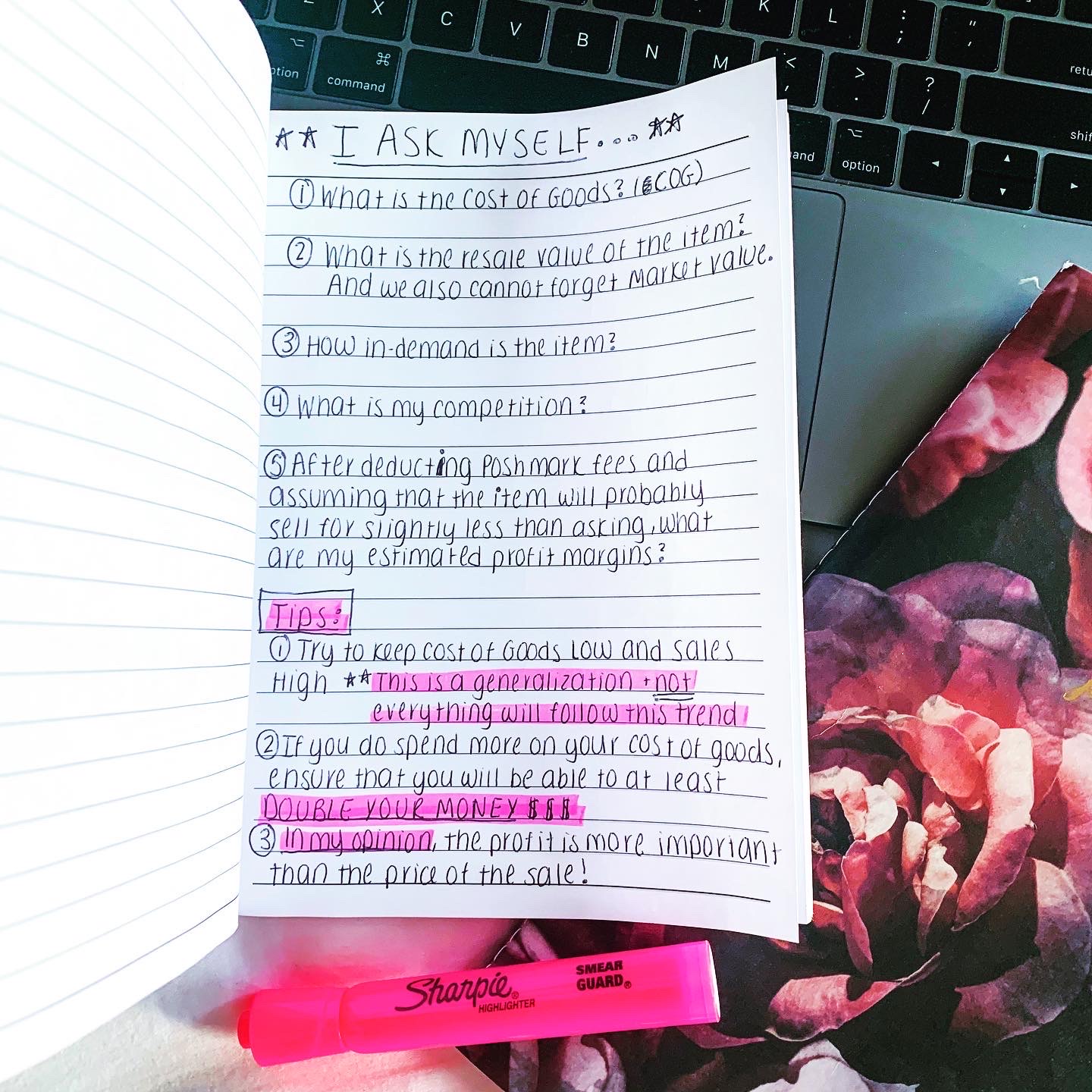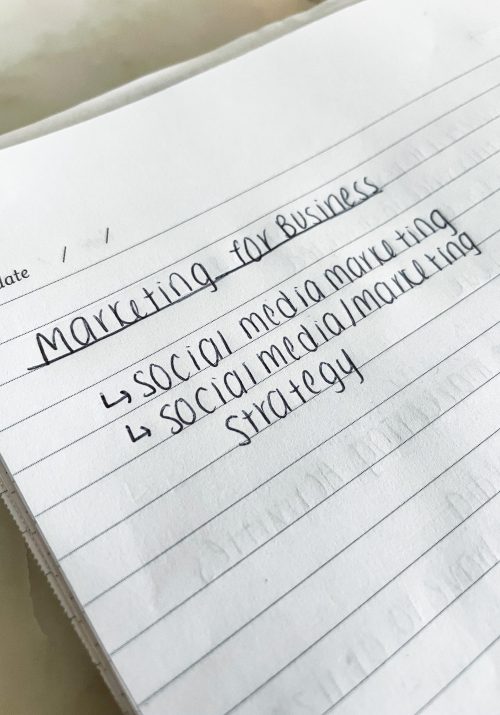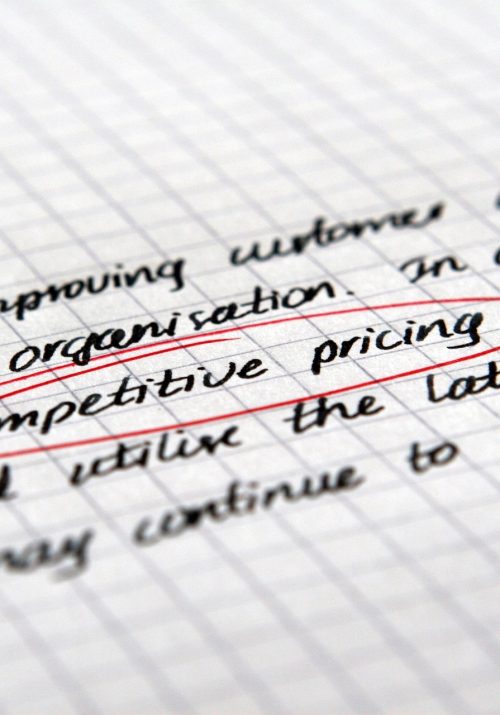As a reseller, your goal is to make money, and more specifically, a profit. We all strive to have high sales numbers but at the end of the day, it is the profit that means the most to us. It is what allows us to pay ourselves and also allows us to reinvest money back into our businesses. With that being said, we want to maximize our profit margins as the more profits we make, the more free capital we have to work with to grow our businesses. Today, I wanted to share with you some tools that I use in order to maximize my profit margins, specifically, how to thoughtfully choose inventory while sourcing.

Let me start off with a few questions that I ask myself when I find an item that I am interested in purchasing:
What is the Cost of Goods (COG)?
What is the resale value of the item? Market Value?
How in-demand is the item?
What is my competition?
After deducting Poshmark fees and assuming that the item will probably sell for slightly less than asking, what are my estimated profit margins?
Now that we’ve asked the hard questions, let’s take a look into what each of them actually mean.
What is the Cost of Goods (COG)?- All this is asking is how much is the item going to cost you to buy and/or invest in. When you are calculating your final profit margins, this number will factor into it.
What is the resale value of the item? Market Value?– The resale value of the item is how much you are able to sell an item for in the resale market versus the market value is how much the market values the item to be. For example, you might sell an item for $10 which is the resale value but the market says that the item is valued at $100. In this example, it is clear that the seller undercut the market value as according to market, it is worth 10x more than what it sold for.
How in-demand is the item?- This one is a biggie. If the item is not “on trend” or “in high demand,” then theoretically, it probably is either going to take a longer time to sell or potentially not sell at all. If it does end up selling, it will probably take up closet real estate for too long of a time and/or sell for a lower price than what was originally anticipated. However, if the item is “on trend” or “in demand,” then it will probably sell relatively quickly.
What is my competition?- This means that you need to scout out your competitors. These competitors could be sellers on your most prominent platform or any other platforms that you sell on. They could also be online retails that have the same item brand new online. Be sure to look at all your competitors to ensure that you have you’re item priced fairly and in a position to sell quickly.
After deducting Poshmark fees and assuming that the item will probably sell for slightly less than asking, what are my estimated profit margins?- For this question, I would suggest either using the tools within the Poshmark app, creating an Excel Spreadsheet with this info on it, or if you are good at math like me, calculate it in your head.
Let me give you an idea of how my process works:
First, I will find an item and let’s say for this example that the item costs $7.99 at a thrift store.
Next, I will head on over to both the Poshmark and Mercari apps to run comps. While on the apps, I am able to determine that the Market Value of the item is $50 but the Resale Value is $40.
Now, we do some math: So although the Market Value of the item is $50, I can safely assume that I will sell the item around $40 give or take. I know that Poshmark is going to deduct 20% from my sale price which then leaves me with $32. I then need to deduct the Cost of Goods which was $7.99.
That then leaves me with $24.01 and I could potentially triple my money.*
*Also take into account any shipping costs .

Let me leave you with a few quick tips to keep in mind:
- Try to keep your cost of goods low and sales numbers high*- This is a generalization and NOT everything follows this trend.
- If you do spend more on your cost of goods, ensure that you are will be able to at least DOUBLE YOUR MONEY.
- In my opinion, the profit is much more important than the total sales numbers. Let’s look at two different resellers: the first make $100,000 in sales while the other made $50,000. The first only made $25,000 in profit on that $100,000 and the second made $25,000 on their $50,000. They both profited the same money but the first seller only had 25% profit margins while the second had 50%.
If you don’t already, be sure to check out my Instagram for more Reselling Tips at @ RecycledRosesGuide (Click HERE)
To get email notifications for my next blog post and to receive a Reseller Recap Every Friday, sign up for my emails below:
Baci,
Bianca Ida



Leave a Reply